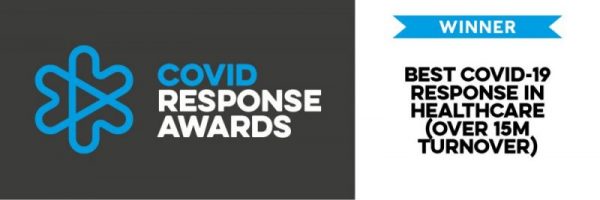Share
- Does your stomach feel weak after having a baby?
- Do you notice that your abdomen is bulging?
- Does your tummy feel loose?
- Are you struggling to know where to begin with strengthening your tummy post baby?
If you answered yes to any of the above then you might have an abdominal separation. This is a common problem after having a baby. The good news is that this problem can get better with Specialist Physiotherapy. Our Women’s Health Physiotherapist can help to assess your stomach and advise you on how to begin strengthening your muscles to flatten your stomach again! It’s never too late to strengthen your abdominals, even if you did have your children several years ago.
What is a ‘mummy tummy’?
During your pregnancy, your stomach muscles will stretch to make room for your growing baby bump. The top layer of stomach muscles (Rectus Abdominis) or ‘six pack muscles’ separate from their attachment to the midline connective tissue called the Linea Alba. In many women the stretched muscles will come back to normal after having a baby. In about 50% of women however, they will be left with abdominal separation called Rectus Abdominis Divarification or diastisis (RAD). Separation of the abdominals will cause weakness of the muscles and can potentially lead to back pain or increased risk of hernias.
- 50% of women will develop an abdominal separation after pregnancy
- This can cause muscle weakness and lead to back pain or hernias
- Specialist treatment can reduce the effect and help repair the separation
How will I know if it’s a problem?
A small separation of less than two finger’s width post-partum is common and is usually not a problem. A separation at the middle of your abdominal muscles which measures more than two finger’s width is indicative of RAD and it is recommended that you see a Specialist Women’s Health Physiotherapist.
How to prevent getting a RAD
- Avoid lifting heavy objects. When lifting draw in your lower abdominal muscles and bend from the knees when picking up objects from the floor or picking up your baby
- Avoid carrying your baby on one hip
- Avoid sit-ups / crunches/ plank exercises
- Roll onto your side when changing position from lying to sitting – avoid combined pulling up and twisting movements
- Avoid positions or exercises that cause your abdominals to ‘bulge’ out
Treatment
During your initial assessment, your physiotherapist will measure the width of your diastasis and together you will decide on a treatment plan. Your physiotherapy treatment aims to reduce the size of the gap and improve lower abdominal muscle function. Your physiotherapy treatment may include:
- Exercises to strengthen and re-train your abdominal and pelvic floor muscles
- Wearing support aids such as Tubigrip helps provide extra support to the abdominal muscles (if necessary) or taping to the abdomen
- Advice on moving, lifting and handling techniques to reduce stress through your abdominals
- Abdominal massage techniques if necessary
Email a Women’s Health expert in confidence to discuss your needs.
Women’s Health Physiotherapy Services at CPPG
Contact Us to book an appointment
Pilates 1:1 Ante & Post Natal
Pregnancy Massage Services
More articles on Pregnancy & Beyond:
Related News
Vita is an award-winning, CQC registered healthcare provider














